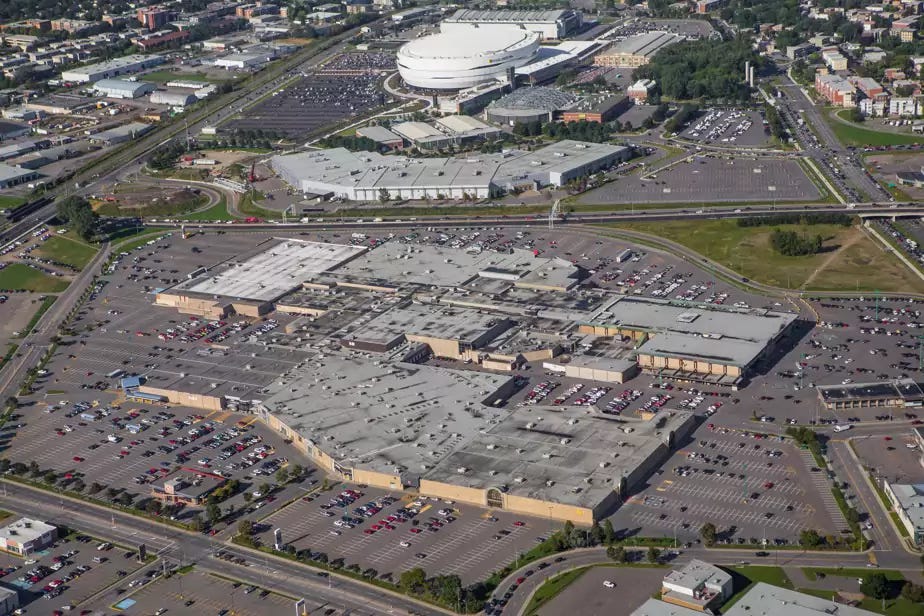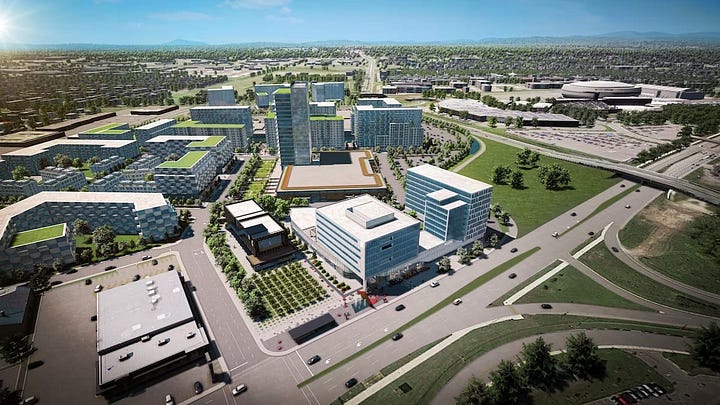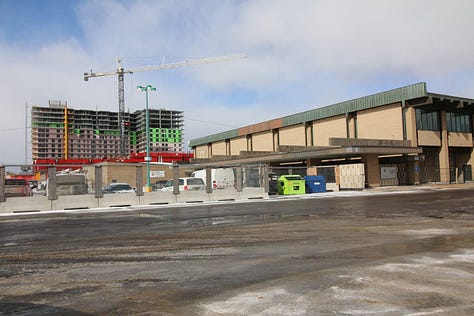Please copy this
Fleur-de-Lys is one hell of a rejuvenated mall.
Place Fleur-de-Lys (which I prefer spelling with hyphens even though it’s changed; we all get to be sticks in the mud some of the time), used to be a very nifty mall. When I was a kid, up until the mid- or late 1980s, it was cool. At least I thought so.
Now, not so much. It’s not doing very well at all, in fact. But the new owners are betting that building a complete community in that space is worth doing and they’re betting $1.5 billion they’re right.
The gist of the project is described in this column so I won’t rewrite it here. But I learned lots in my Wednesday conversation with William Trudel, CEO of the company behind this project and it wouldn’t fit in the column no matter how hard I pushed on the shoe horn so here goes.
As an aside, there is something to be said for a 100% québécois entreprise to be behind reviving such an iconically québécois landmark. It’s not lost on the community, I can guarantee you that. I think people are sick of big giant impersonal REITs (real estate investment trusts) gobbling up everything and using people and communities as tokens in a game of who-gets-richest-first.
For sure, Trudel is a business and like all businesses they’re in the business of being profitable. Enough to be able to pay their employees and to reinvest and to keep doing projects that make the larger community better. There’s nothing wrong with making money doing good things for the community — as long as the community is meaningfully involved and supportive of said good things.
And that’s key, this meaningful involvement. When he described the engagement process to me, William Trudel pointed to several key aspects of the project that came straight from community members. A big one is that people in the neighbourhood really didn’t want the original Sears (with its giant, signature fleur de lys carved into the outside walls) to be demolished. It won’t be. Right now it’s where project architects Groupe A, have their offices. And lovely offices they are, too, where I went to take pictures of the 3D-printed model of the project. The tallest building in the background is Complexe G, near the National Assembly.
Another suggestion that came from public consultations was having the satellite campus of Université du Québec à Trois-Rivières deliver programs in disciplines local stakeholders like the neighbouring rehabilitation centre said they needed. The satellite campus is already operating, in that same old Sears building.
And then there’s going above and beyond.
Setting aside 15 percent of affordable units and 10 percent of accessible units (out of 3,500 units; do the math) is one thing. But they decided to go further than code, for instance by reinforcing ceilings to accommodate lifts, and ensuring that public amenities, like pools, would be fully accessible. At no extra cost to tenants with disabilities.
To help offset the heat island effect the new project will feature green roofs and all kinds of green spaces. If you look at old photos of the mall, like this one taken in 2015 (borrowed from La Presse), you can almost feel the stifling heat.

It’s so familiar. I mean, we’re used to having concrete and flat roofs and stupendous numbers of mostly-empty parking spaces.
So. Much. Asphalt.
Now have a look at these images of the final project. And imagine what Place d’Orleans or Carlingwood or South Keys could look like, and you’ll get why I find Fleur-de-Lys so exciting.





One more thing: The project includes financial involvement from the Quebec government, to the tune of $43 million. Out of $1.5 billion. I’m not trying to say $43 million isn’t much — of course it’s a lot of money. Public money is always a lot of money. But it’s quite modest relative to the overall size and financial commitment of the thing.
I absolutely love that private-sector businesspeople see a way to make money by creating such a wonderful mini-city, a complete community and fantastic example of a 15-minute neighbourhood that favours clean air and active transportation too. This is a tremendous benefit to the community, and the city. As someone who’s been harping on these issues for years, I am delighted to see this project slowly come to life, even though at the moment it looks like a big old mess.



When I urge other mall owners to copy this idea, I don’t mean literally do the same thing. I mean ask local communities what they want — take the time to do that right and to hear everyone. Then put together a plan that works for the site and that answers the needs of the community — as expressed by the community.
Do that instead of sticking yet another lazy tower in a corner of your parking lot, without anything around it to make it a home. Please and thank you.



